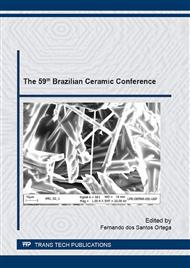p.277
p.283
p.289
p.295
p.300
p.307
p.313
p.318
p.323
Behavior of Fiberglass Polymer Composites under Ballistic Impact and Quasi-Static Punch Shear Tests
Abstract:
In the last decades, the composite materials were used in the modern ballistic armor systems. Thus, techniques have been developed to predict its mechanical properties, damage mechanisms and strength associated to ballistic impact penetration. The objective of this work was the ballistic impact and quasi-static punch shear behavior of fiberglass polymer composites. The materials used in the experiments were: woven fabric and chopped strand mat E-glass fiber and polyester resin. The composites submitted to ballistic impact and quasi-static punch shear tests had 1, 5, 10, 15, and 20 layers and 5, 8, 10, 12, 14, 15, and 20 layers, respectively. A quasi-static punch shear fixture test was developed. The best ballistic performance composite was the 10 layers woven fabric. In quasi-static punch shear test, it was possible to analyze the internal fracture of composites, and the load x displacement behavior was observed.
Info:
Periodical:
Pages:
300-306
Citation:
Online since:
November 2016
Price:
Сopyright:
© 2017 Trans Tech Publications Ltd. All Rights Reserved
Share:
Citation:


